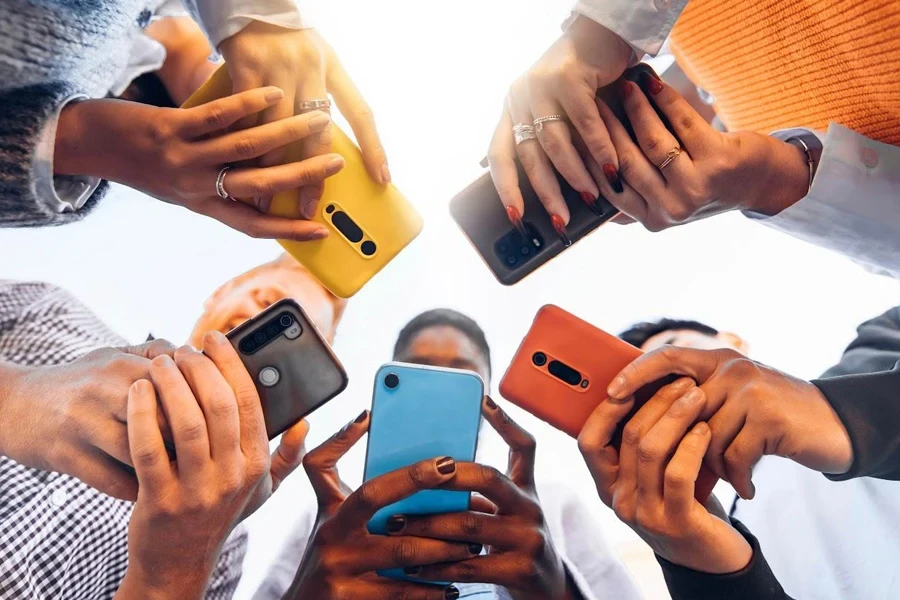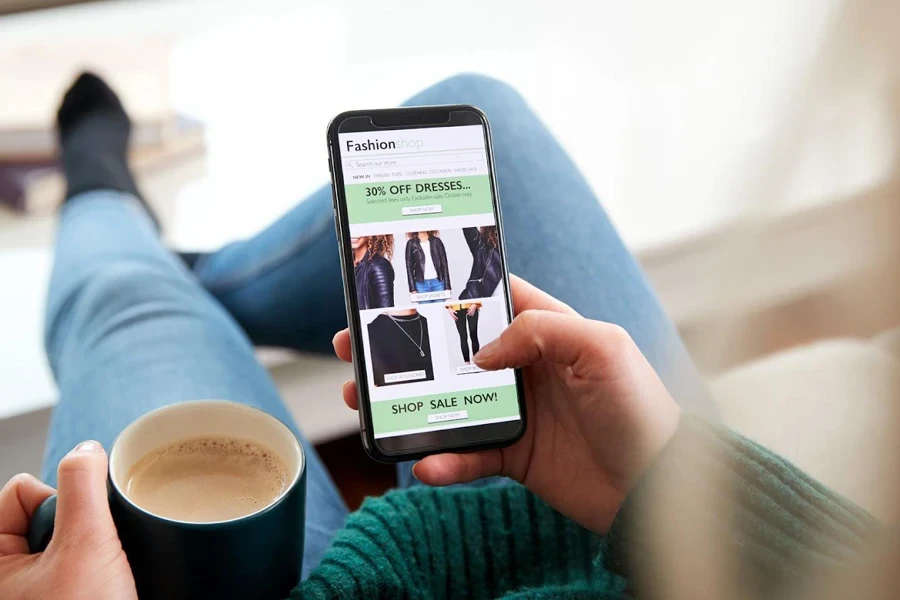Marketing to millennials is not the same as marketing to Gen Z. As Gen Z enters the workforce, businesses will see key differences in how they budget, spend, and save compared to millennials. Each generation’s unique experiences, shaped by various events, influence their views on brands.
These differences are more noticeable with the rise of the internet. Soon, millennials and Gen Z will dominate the workforce and have significant spending power. Hence, businesses must understand their differences in order to develop effective marketing strategies. This article will help brands understand these differences.
Table of Contents
What to know about Millennial and Gen Z customers
How to leverage these differences when marketing to Millennials and Gen Z
In conclusion
What to know about Millennial and Gen Z customers

A report from Glassdoor shows all the key differences between Millennials and Gen Z consumers. These differences determine how brands and businesses can market to each generational market. Here’s a table showing them in an easy-to-read format for businesses.
| Millennials | Gen Z | |
| Birth years | Born from 1981 to 1995 | Born from 1996 to 2012 |
| Outlook | Grew up during the economic growth, leading to optimism and comfort with job hopping. | Raised during the Great Recession (2007 to 2009), making them more practical and focused on job security. |
| Work style | Prefer teamwork and collaborating with colleagues. | Prefer working independently with a “do it myself” attitude. |
| Education | 20% have a bachelor’s degree but often question the value due to student loan debt. | 75% believe in alternative education paths beyond traditional college. |
| Technological impact | Tech-savvy: They remember life before widespread internet and gadgets and are multi-screen users. | Tech-native: They have never known life without the internet and can use the online world without problems. |
How to leverage these differences when marketing to Millennials and Gen Z
Millennials and Gen Z: what are their favorite marketing channels?

Millennials and Gen Z both love social media but like different platforms. Millennials often use Facebook, YouTube, Instagram, Twitter, and LinkedIn, spending around 3.8 hours a day on these platforms. On the other hand, Gen Z prefers TikTok, Snapchat, Instagram, and YouTube, spending more than 4.5 hours daily online, not counting gaming. Both groups follow people with similar interests, creators, and influencers.
How to apply this to marketing strategies

Both generations prefer different social media platforms, meaning businesses must favor trends that support both groups in order to attract them with social media marketing. Here are a few tips to help:
- Both generations trust online creators and influencers. So, businesses can use rising platforms like TikTok and partner with influencers for more reach.
- Short-form video platforms are popular with both groups. Hence, businesses can create engaging content on these platforms to capture their attention.
- Form strategic partnerships with influencers and brands that already reach millennial or Gen Z audiences.
Millennials vs. Gen Z: buying frequency

As more Gen Z members join the workforce, businesses now see differences in buying habits compared to millennials. Although both generations spend less than older ones, their spending patterns vary.
A report by Mckinsey shows that millenials already have a $2.5 trillion annual spending in 2022, predicting it will grow as the generation’s income cross $8.3 trillion by 2025. Meanwhile, a different report shows Gen Z only commands $450 billion in spending power.
This difference reflects their views on money. Gen Z is more practical, buying only when necessary. Meanwhile, millennials are more optimistic about their finances and earn more than older generations did at their age. Hence, they tend to shop more frequently.
How to apply this to marketing strategies

Here’s what to know when selling to each generation:
- Gen Z is more practical. Hence, businesses must tailor their marketing to highlight practical benefits like free shipping or discount codes to help them decide.
- Both millennials and Gen Z spend less than older generations, so brands must emphasize product benefits. Since quality is crucial for these groups, brands should ensure their product offers good value for their money to attract these savvy shoppers.
Millennials vs. Gen Z: brand loyalty

Brand loyalty is crucial for both generations. Millennials led the way by prioritizing personal values and demanding brands follow suit. Now, Gen Z continues this trend. Both generations value sustainability, environmentalism, and social justice. They also want brands to support causes they believe in.
Gen Z is also willing to pay more for sustainable options or brands with strong sustainability values. These generations hold brands accountable for their actions and aren’t afraid to boycott or voice their concerns online until they make changes.
How to apply this to marketing strategies

Brand loyalty matters greatly when targeting millennials and Gen Z. Here are three tips businesses can use to boost their next campaigns:
- Brands must develop a strong brand identity that reflects their customers’ values. Studies show that 71% of millennials prefer brands with similar values.
- Businesses must also practice what they preach, aligning their values with their actions. It’s an investment in the future, as these generations value authenticity.
- Businesses can show how they are living their values. They can share reports on the causes they support and how they support them, or they can highlight how consumers’ support makes a difference.
Millennials vs Gen Z: how they see ads and branded content

Younger generations, like Millennials and Gen Z, trust online ads less. Only 36% of millennials and 32% of Gen Z trust the social media ads they see. For this reason, relying only on ads for marketing might not work well.
Millennials are more open to buying after seeing traditional ads, including social media and podcast sponsorships, but Gen Z is more resistant. Many Gen Zers use ad blockers on their devices (including mobile) and are more likely to skip online ads. It shows the challenge of reaching them through traditional advertising methods.
How to apply this to marketing strategies

If online ads are losing their touch with younger people, here’s how businesses can still boost their marketing and sales:
- Focus on sharing useful information instead of just trying to sell. Millennials and Gen Z appreciate content that teaches them something or helps them in some way. Businesses can try using influencer marketing for this strategy.
- Businesses can create organic buzz for their brand. Earned media happens when others talk about brands online without incentives. However, achieving this requires coming up with products and campaigns that people and the media will want to talk about.
Millennials vs. Gen Z: where they prefer shopping

Millennials and Gen Z shop online differently. Although both grew up with the internet, Gen Z has been using it from a younger age, making them more mobile-first. Gen Z is more likely to shop using their phones, being twice as likely as millennials to place orders through mobile devices.
This trend may be because smartphones are more accessible to teens than computers, but mobile shopping is likely to remain popular among Gen Z if things change. Millennials also use their phones for online shopping, appreciating the convenience and ease. Many retailers have created apps for shopping, checkout, and order tracking, enhancing the mobile shopping experience for both generations.
How to apply this to marketing strategies

Here are some tips to help businesses enhance their market:
- Design online stores and websites to be mobile-friendly.
- Consider creating shopping apps or partnering with retailers that have popular shopping apps.
- For millennials, prioritize a smooth user experience with a simple, quick checkout process.
- Offer various payment options, including online wallets and “buy now, pay later” plans, as many young Gen Z users can’t use credit cards.
- Leverage social platforms by using Instagram and Facebook shopping tools.
In conclusion
Millennials used to dominate the work market, but Gen Zs are slowly entering, introducing new shopping habits businesses must account for. While there are similarities, Gen Z often takes millennial preferences even further. Nevertheless, retailers can use this guide when planning their next campaigns. Is the main market Millennials or Gen Z? Identify it and focus on the right platforms and content.
Remember, don’t hesitate to try new approaches. Millennials and Gen Z can embrace change and will likely value brands that do the same.




